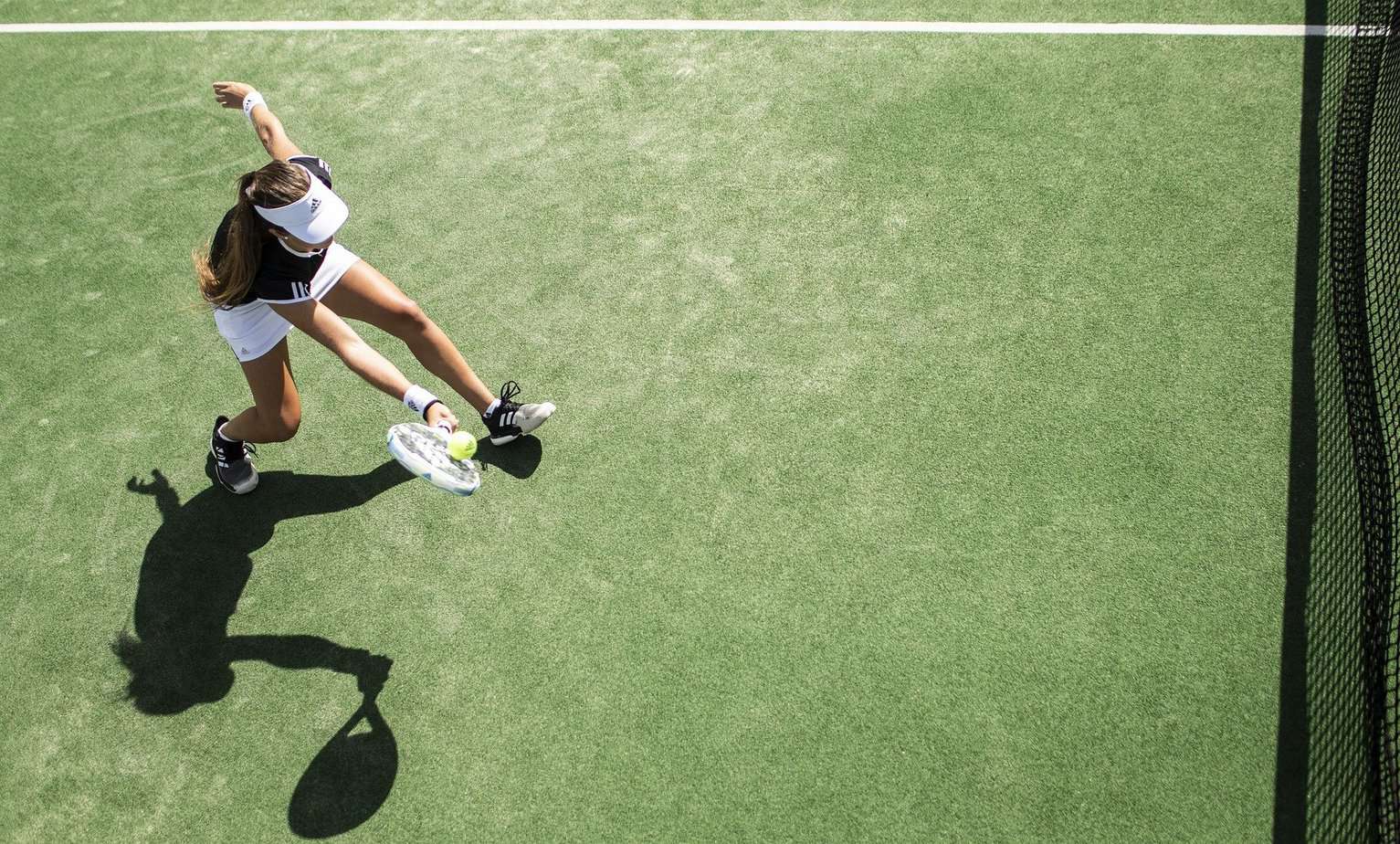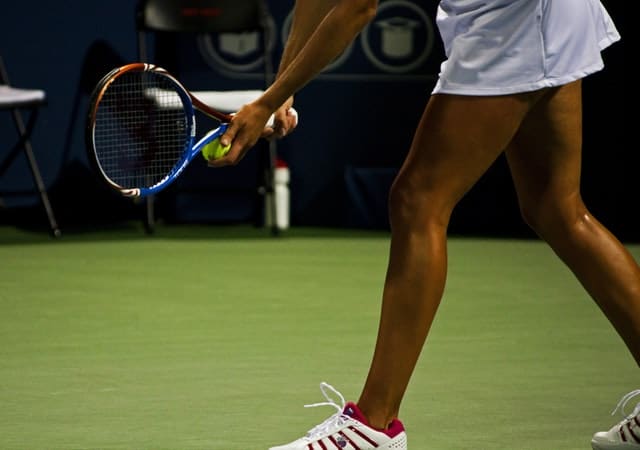Whether it is about policies or players, sports have become an ever-evolving space where we find ourselves discussing the issue of whether we should let star players be held to more “normal” standards than what they have set for themselves in the past.
We are, of course, referring to Serena Williams. Before the Women’s Tennis Association showed their ‘concerns’ over Peng Shuai’s well-being after she dismissed sexual assault allegations, Serena Williams and other athletes had faced sexism in sports.
Despite having made her way to the US Open quarterfinals quite recently, Williams’ fans found her providing justifications on how her drop of a set was not due to her level going down by a significant margin but due to the difference of only a couple of points.
The explanation, while not unprecedented, seems odd when it has to come from a player of Williams’ stature, who is getting back to form after the birth of her daughter, Olympia, who turned one this August.
Williams made her return to the world of tennis in June 2018 via the French Open, her first Grand Slam of 2018. However, she had to pull out, citing a pec injury amidst yet another appropriate comment on her looks, this time by a journalist.
Since then, she has improved in getting back to her previous form in the court, and her recent performance is a testament to that. However, how she has to justify slipping up in a set by a couple of points makes one wonder: when was the last time a star player had to provide such an explanation?
How Sexism in Sports Affects Star Players
While the examples of sexism in sports are aplenty, we chose Williams because she has been the focal point of such treatment. Serena Williams came to the limelight with her impeccable skill – which still did not stop a few people from commenting on her appearance. Even the French Open banned her from wearing a catsuit that she previously wore for medical reasons.
But throughout such incidents, the support for Williams has been significant through the media and her fan base. However, while that serves as her support system, it leaves many female players to be subjected to the same behavior without having the exact source of finding solace. In their case, the behavior is more constricting since they do not have the same level of fame that Williams has achieved for herself and do not think they have the support they need from relevant authorities.
According to a study performed in 2015, 40% of elite sportswomen confirmed their encounter with sexism in the field, with 43% also sharing that they do not think their government body supports them as much as they do their male counterparts.
While the study only focused on players from Great Britain, a recent incident at the 2018 US Open sparked yet another debate on how female players are treated differently than male players. In said situation, French player Alizé Cornet was issued a warning for changing her shirt by the end of the court, while male players did the same without any corrective action.
The sexism becomes more apparent when you take the ever-widening pay gap into question, where Williams, once again, made headlines in 2017 by being the only female player among the world’s 100 highest-paid athletes. No other woman came close to making a list, which hinted at the more significant issue of different behaviors within the same industry.
Who is to Be Blamed? Is There a Solution?
While some put the blame directly on authorities, said entities turn back and take a shot at the fans who support sports with more male players in them than ones where female players have an opportunity – with tennis being the only major sporting event that lets male and female players participate in the exact matches.
This makes sense to some extent of the pay gap due to how male association football and American football rule the international and US national space. However, it still does not define the apparent sexism exhibited by authorities, media, and even the general public.
This calls for social reform on multiple levels, which will be easier said than done. However, what we can do on individual levels is to look at female and male players with a gaze that does not differentiate between them except for the sports they play and how they play them amongst their counterparts.
Only by removing the dated identifier of gender from our judgment could we achieve a level of equality in this space – which is the least we could all do. After all, the idea of sports was conceived based on recreation for the human race, not for single-gender identity.
The Impact of Serena Williams on Gender Equality in Sports
Serena Williams’ journey through professional tennis has brought many issues of sexism in sports to the forefront. Her visibility as a prominent figure in women’s sports has sparked debates on unequal treatment and the societal pressures placed on female athletes. From being criticized for her attire to enduring comments about her appearance, Williams has faced challenges that extend beyond the court. These incidents serve as examples of how female athletes are judged differently than their male counterparts, not only in tennis but across all sports.
Even when Williams made her comeback after the birth of her daughter, Olympia, she was expected to meet an extraordinary level of performance, as if time hadn’t passed or her circumstances hadn’t changed. The fact that she had to defend a slight drop in performance reflects the unfair standards to which women in sports are often held. While male athletes are celebrated for longevity and resilience, female athletes like Williams often have to justify any perceived weakness, as though they have to prove their worth all over again, even after decades of dominating their sport.
Ongoing Gender Inequality in Sports
Gender inequality is pervasive across various sports, and tennis, despite being one of the few professional sports where male and female athletes are somewhat equally represented, still presents numerous examples of unfair treatment. The dress code incident involving French player Alizé Cornet at the 2018 US Open, where she was penalized for adjusting her shirt, brought to light the double standards imposed on women in sports. Male players frequently make similar adjustments without consequences, highlighting the underlying sexism embedded in the rules and their enforcement.
Serena Williams’ career has been filled with similar experiences. In 2018, she was banned from wearing a medical catsuit designed to prevent blood clots at the French Open, drawing widespread criticism for the unnecessary scrutiny of her attire. Such instances of sexism show that even a player as accomplished as Williams cannot escape the gendered expectations placed on women in the sports industry.
The Wage Gap in Professional Sports
One of the most striking inequalities between male and female athletes lies in their salaries. Despite Williams’ dominance in tennis and her significant impact on the sport, she was the only woman on the list of the world’s 100 highest-paid athletes in 2017. This wage gap is reflective of the broader issue in sports where female athletes, even at the pinnacle of their careers, earn considerably less than their male counterparts.
While male-dominated sports like football and basketball command massive television audiences and sponsorship deals, women’s sports still struggle to attain equal recognition. Even with the rise of women’s leagues and competitions, the financial disparity continues to grow. The issue is not just confined to tennis, but extends across other sports such as soccer, basketball, and athletics, where female athletes consistently earn a fraction of what male athletes do. This discrepancy not only affects their income but also their visibility, sponsorship opportunities, and overall career longevity.
A Call for Structural Change in Sports
The responsibility for addressing sexism in sports does not solely rest on the athletes. Institutions, governing bodies, sponsors, and fans all play a part in perpetuating or dismantling these barriers. The media’s portrayal of female athletes often focuses on their appearance rather than their accomplishments, reinforcing gender stereotypes that trivialize their skills and contributions. By shifting the narrative and celebrating athletes for their talents, regardless of gender, the sports world can begin to move toward true equality.
Governance and policymaking within sports organizations also require significant reform. Introducing stricter policies against sexism and ensuring equal representation in decision-making roles can help break down institutional barriers that prevent women from advancing in the industry. The Women’s Tennis Association (WTA) and other sporting bodies must take a more active stance in promoting gender equality and supporting female athletes at all levels, from grassroots programs to professional leagues.
The Legacy of Serena Williams and the Path Forward
As Serena Williams continues to inspire future generations of athletes, her influence extends far beyond tennis. She has become a symbol of resilience, not only for overcoming personal challenges on the court but also for standing firm against the sexism that permeates sports culture. Her journey highlights the broader struggles that women in sports face, but it also serves as a reminder of the power of perseverance and advocacy.
Williams’ fight for equality is not over, and the next steps toward eliminating sexism in sports involve ongoing advocacy, education, and a commitment to leveling the playing field. By fostering a culture of inclusion and fairness, sports can move closer to their original purpose — as a space for human achievement, regardless of gender.



